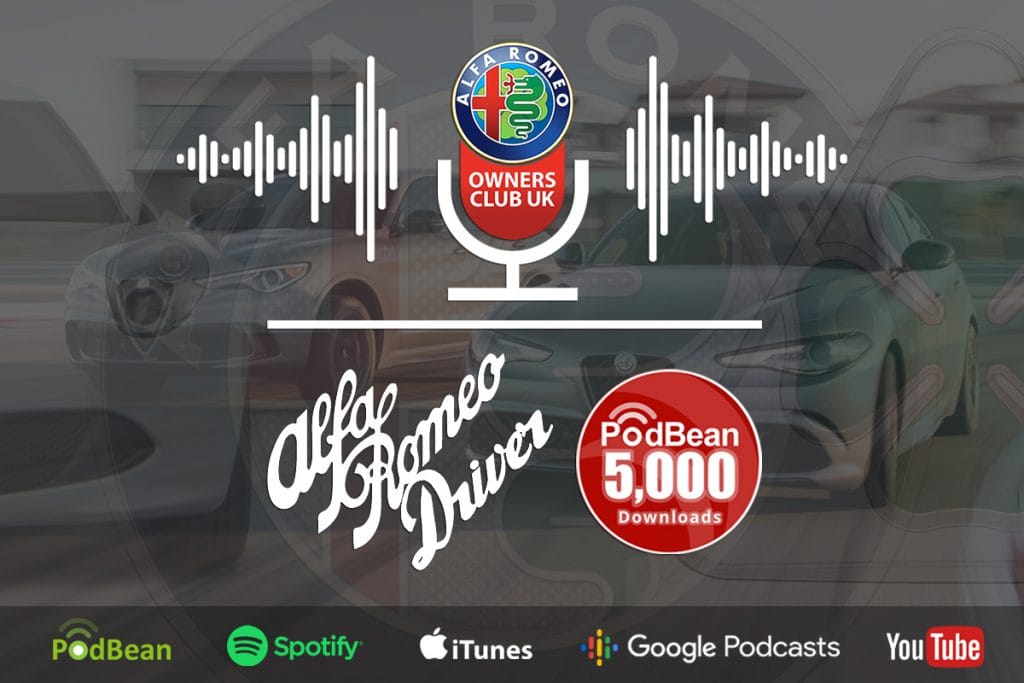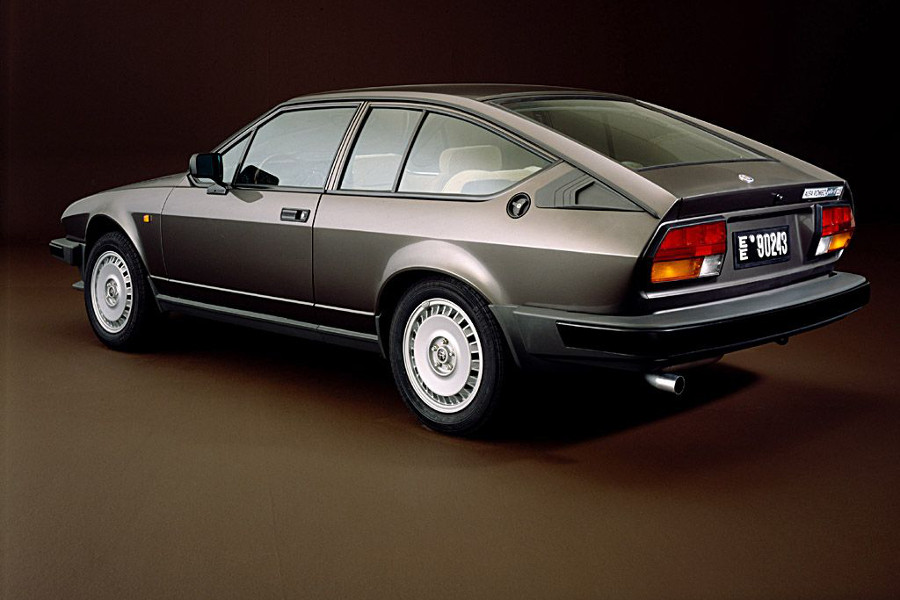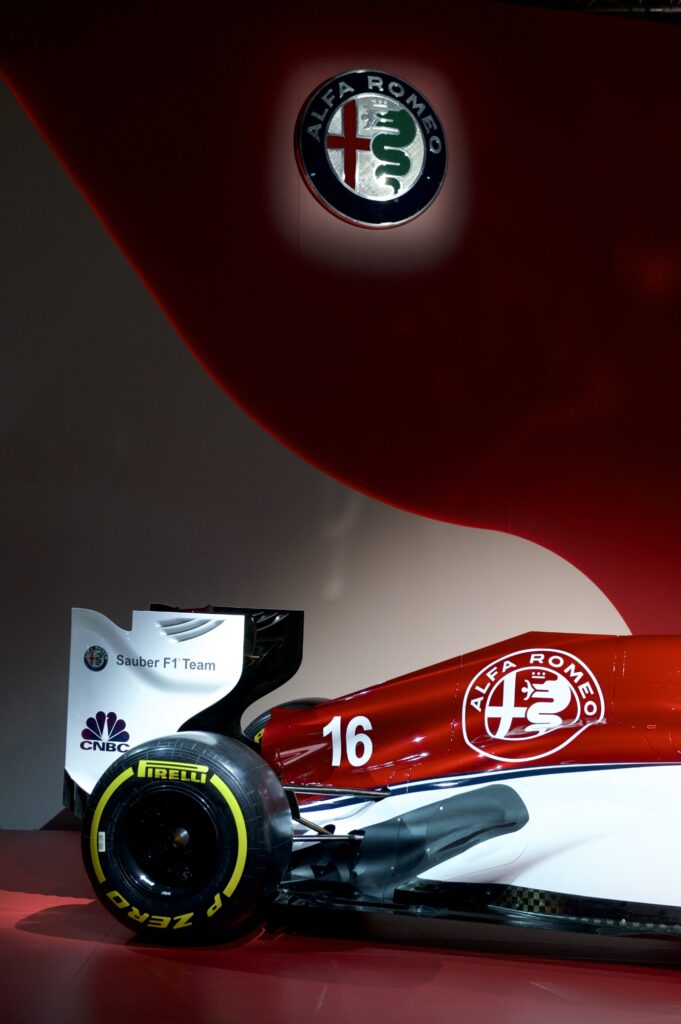
Alfa Romeo History
1910 – 1920
The Alfa Romeo story started in Milan on 24, June 1910.
That was the day a group of entrepreneurs and businessmen took over the Italian Darracq automobile company (based in Portello on the outskirts of Milan) from its French parent company, and called it Anonima Lombarda Fabbrica Automobili – A.L.F.A.
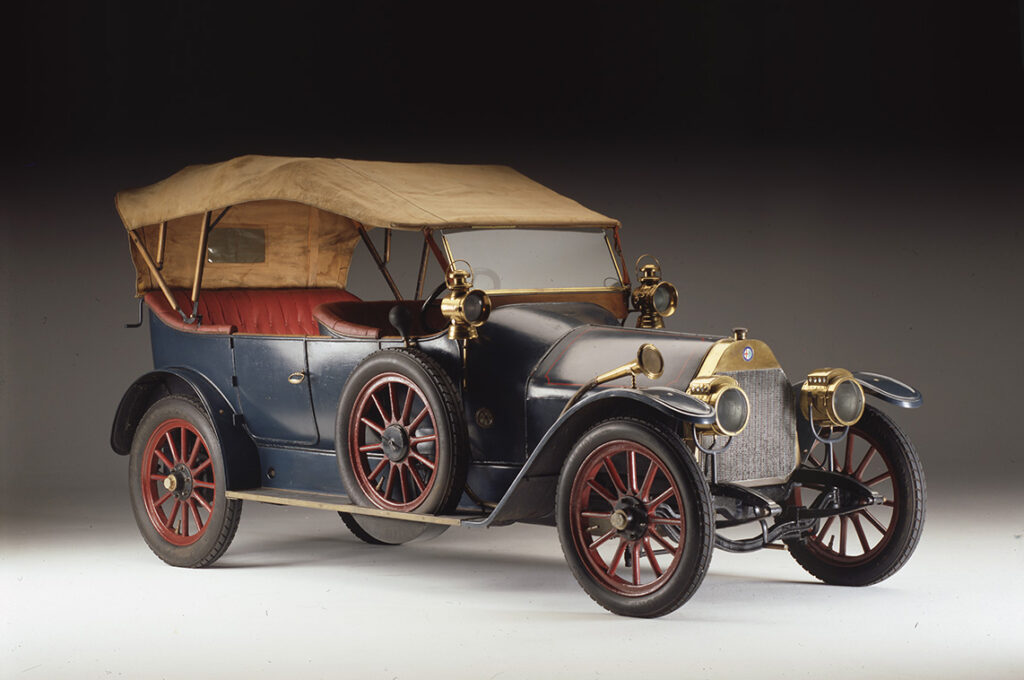
The new company was formed at a time of economic and social change: the first plastics were being invented, Guglielmo Marconi received the Nobel prize for physics and Alfa’s competitors – Fiat and Lancia – were eleven and three years old respectively.
The new company began with a winner: the 24 hp. The mechanical components, performance and driving satisfaction that proved so popular on Alfa’s first car are all features for which the brand was to become famous.
The car also cost ‘only’ 12,000 Lire, i.e. £23,000 at today’s prices. The following year it made its racing debut, and it was set to win the Targa Florio when forced to withdraw due to a minor accident when the driver was temporarily blinded by mud.
In 1912, Alfa launched the 15-20 hp, and the 40-60 hp arrived in 1913. This car’s six litre engine powered it to second place overall in the Parma-Poggio Berceto hillclimb. Next year, Giuseppe Merosi built the first Alfa Grand Prix car in which driver Giuseppe Campari covered a kilometre at more than 147 km/h.
The outbreak of World War One and consequent limited resources brought difficulties for the company. On 2, December 1915 it was taken over by the Neapolitan engineer and entrepreneur Nicola Romeo. The Portello plant, which employed 2,500 people at the time, was extended to handle military orders. At this time it was producing motor-driven compressors, munitions, aircraft engines and, from 1917, rolling stock.
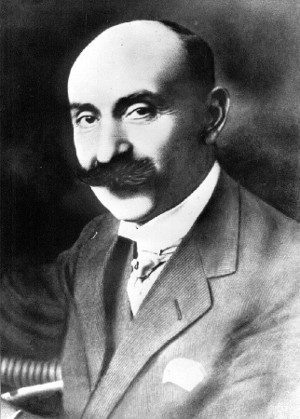
1921 – 1930
Like all other European countries, Italy underwent a political, social and economic crisis during the immediate post-war years.
Factories were occupied and currency devalued. The dollar was quoted at little more than five lire in 1914, but rose to nearly 30 lire six years later. In 1921, Banco Nazionale di Sconto, the main shareholder of Ansaldo in Genoa, Ilva in Piombino and Alfa Romeo, collapsed.
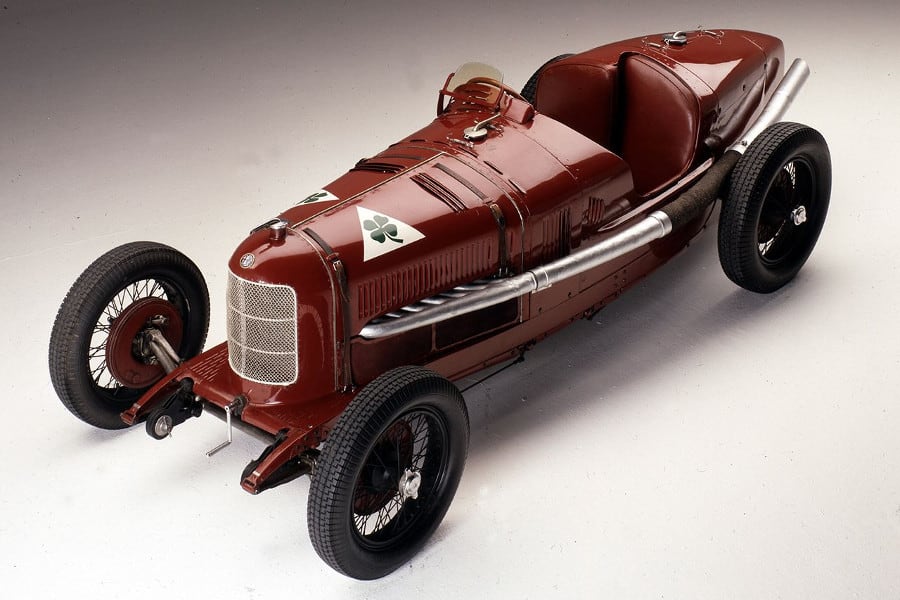
The government was forced to intervene and set up a special body (IRI) to subsidise these industries. The following year protesters marched on Rome, and even though the first locomotive built by the company was produced at the Saronno workshop, Alfa Romeo remained in difficulties.
The RL model, however, met with considerable success in 1923, when it took first, second and fourth places in the Targa Florio. At the Savio circuit the Baracca family gave Enzo Ferrari the prancing horse symbol that he was later to use on all his own cars. Merosi built the Grand Prix Romeo that later became the P1. Designer Vittorio Jano arrived from Fiat and began work on the P2.
A period of great technical innovation and sporting success then began to unfold. The reliability of Alfa’s engines was indisputable and the talent of its drivers a byword for skill on racetracks across Europe. Among them were Antonio Ascari, Gastone Brilli Peri, Giuseppe Campari, Enzo Ferrari, Tazio Nuvolari and Achille Varzi.
1931-1940
The world economic crisis triggered by the Wall Street Crash of 1929 affected Alfa’s growth and, in 1933, the Italian State’s Institute for Industrial Reconstruction (IRI) was forced to intervene.
The same year, the company pulled out of racing and its 8C 2300 B models were entrusted to Ferrari. The results were outstanding when it is considered that Alfa won more races than all other manufacturers during 1934, and in 1936 the company’s sporting activities actually forced standard production to take a back seat!
Two years later came the 8C 2900 B Lungo. The Touring version of this car was the most representative Alfa of the period; its mighty bonnet an intoxicating symbol of style and power. Alfa Romeo’s tradition of making standard production models to exactly the same mechanical and engine specifications as their race-winning counterparts really paid off when this car took the first three places in the Mille Miglia. In 1938, Jano resigned and, from then on, racing cars were designed by Gioacchino Colombo and Luigi Bazzi under the supervision of Wilfredo Ricart.

Strategic decisions had to be made during this period, and IRI directed Alfa’s manufacturing activities toward commercial vehicles and aero engines. In 1931 the first truck, the Bussing 50, appeared, followed by the 85C and the 350 Diesel, later to be adopted by the Fire Brigade. In 1935, the T85G won an international race for petrol-engined trucks over the Rome-Brussels-Paris route.
Alfa engines were also the world’s best in aviation. They owed their success to the use of state-of-the-art materials such as Duralfa, a light aluminium alloy used to build propellers, pistons, cylinder heads and other components.
In 1939 the 135 was unveiled, a twin-row 18-cylinder radial engine that developed nearly 2000 hp and was the most powerful unit of its time. Some 150 of these were produced for the Luftwaffe. The 126, 127 and 128 set and beat 13 flying boat and aircraft world speed, height and distance records.
Aeronautical output accounted for nearly 80 per cent of Alfa’s annual turnover and a new plant was built at Pomigliano d’Arco (Naples) at the end of the decade to meet growing demand, some of it from abroad. This had a positive impact on workforce numbers, which rose from 1000 to 14,000 in the space of seven years. On 10, June 1940, however, Italy joined Germany in World War Two and the company’s ambitious plans were overturned.
1941-1950
Like most of the Italian industry, Alfa was forced to carry out war work and its plants suffered from allied bombing raids as a result.
Northern Italy also had to contend with the German occupation after September 1943. It was difficult to find raw materials and there was also a fear that entire departments would be transferred to Germany.
Yet somehow the company managed to maintain its high engineering standards. In 1942, for example, a three-engined Italian SM75 powered by Alfa 128 units flew the 20,000 kilometres to Tokyo and back. After a bombing raid on 20 October 1944, however, the Portello plant ceased all activities.
After the war, nothing was left standing in which to build aviation engines or buses, let alone cars. So the 8000 Portello employees built electric cookers, steel furniture, fixtures, fittings and blinds – anything that the community needed to rebuild.
Cars were not built again until 1946 when the factory began to turn out pre-war 6C 2500 cars. Out on the track, the company raced 158s salvaged from the ruins. Then the new versions (Freccia d’Oro and Villa d’Este) arrived with their innovative steering wheel-mounted gear shift. Everyone liked them, including VIPs of the period. Rita Hayworth, Tyrone Power, Prince Ranieri of Monaco and King Farouk of Egypt all owned these cars.
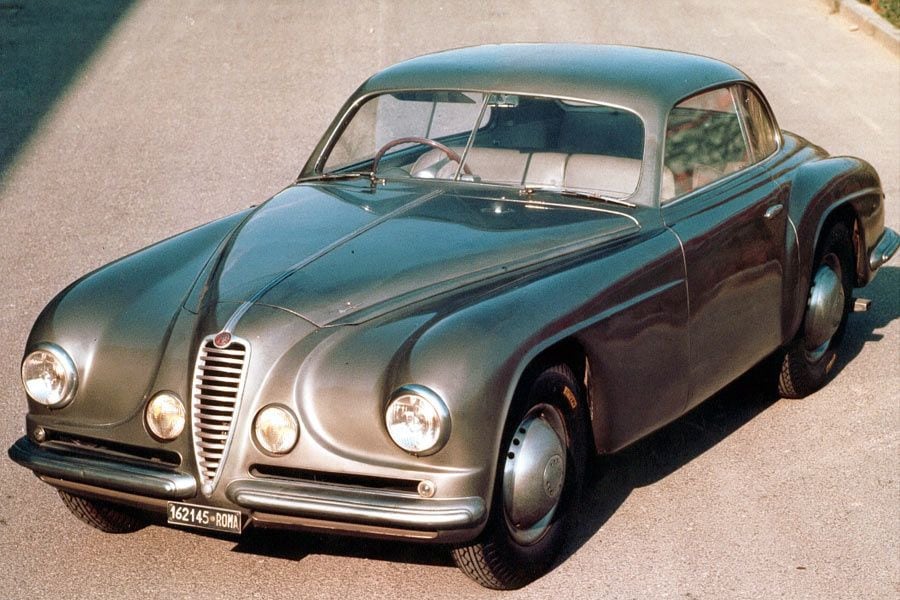
In 1950 the 1900 was launched – the first Alfa with a unitary body designed by Orazio Satta Puliga (who joined the company in 1938). Sporting triumphs began to accumulate. The Alfa 158 enjoyed absolute supremacy in Grands Prix and won the world championship in 1950 with Farina at the wheel. Alfa also resumed production of commercial vehicles, aircraft and marine engines as well as diesel power units for industrial application. In 1948 IRI was reorganised and Alfa passed into the hands of subsidiary holding company, Finmeccanica. These promising events were interspersed with sadder episodes: Ugo Gobbato was mysteriously killed in Milan in 1945 and racing drivers Varzi, Trossi and Wimille both died.
1951-1960
As De Gasperi, Adenuer and Schuman laid the foundations for a future European Union, and international politics was dominated by the cold war, the Italians dreamed of prosperity and a time when everyone would own their own car.
Only one in every 96 Italians owned a car in 1949. This figure rose to one in 28 in 1958 and one in 11 in 1963. Italy’s gross domestic product also increased by 6.3 per cent per year between 1955 and 1960.
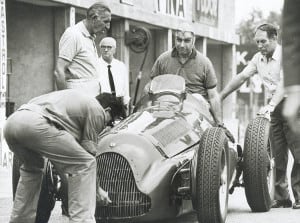
After the success of the 1900 (some 20,000 were built), Alfa’s automotive business took on an industrial dimension. In 1951, Fangio won the world F1 championship at the wheel of a 159 fitted with the most powerful 1500 cc engine ever built. It produced 425 horsepower and was capable of more than 300 km/h. Immediately thereafter, Alfa decided to withdraw from Grand Prix racing. It continued to compete in other races, however, and produced the lens-shaped ‘1900 Disco Volante’ with a top speed of 225 km/h for this purpose.
The Giulietta Sprint Coupé, forerunner of so many successful models, arrived in 1954. This was the must-have 1300 of its day, and nearly 28,000 were sold. The 1955 Spider version was one of the finest open-topped cars of all time. It was a typically Alfa blend of style, personality and mechanical sophistication that somehow managed to express all the creative enthusiasm and will to thrive that underpinned the Italian economic boom of the early Sixties. The car’s success allowed Alfa to extend its presence overseas. The Giulietta Spider was created in response to demand from the US importer, which ordered 600.
The 2000 went into production in 1958. This box-like saloon was joined by a Spider and Coupé. During the following year, production began on a Dauphine utility model (under licence from Renault) in order to maintain production at adequate levels.

Production of commercial vehicles and Saviem diesel engines continued at Pomigliano d’Arco. The US jeep-inspired 1900 AR51 (better known as the Matta) was built for the army, while a multi-purpose light commercial vehicle known as the Romeo was built for the general public. In 1956, engineer Filippo Surace joined Alfa Romeo. Twenty years later he would take over from Orazio Satta Puliga. Alfa Romeo was to be indebted to him for, among other things, the 33, 75, 90 and 164.
1961-1970
The Sixties began in a rosy glow of optimism. Italy had just hosted the Olympic Games and was experiencing an economic boom.
Alfa Romeo had now become a group with subsidiary companies of its own, and had outgrown the Portello headquarters, which was being swallowed up by all the new building work going on in Milan.
The company, therefore, built a new plant at Arese that covered an area of more than 2.5 million square metres, and production was gradually transferred there. A track was also built at Balocco (Vercelli) to test prototypes. Because demand for cars was predicted to rocket, Alfa Romeo also built another site at Pomigliano d’Arco (the first brick was laid on 29 April 1968). Engineer Rudolf Hruska was commissioned to design and build a new car, and thus the Alfasud took shape.
One of the most representative cars of that period was the Giulia. It arrived in 1962 and, like other models, was destined to diversify into an extensive range of saloons and sporting models. More than one million were sold over the next 14 years. To put these figures into context, the company built almost 35,000 cars in total between 1910 and 1955, but total production had risen to around 500,000 cars by 1970. The 2600 also dates from 1962 and was the first Alfa equipped with disc brakes.

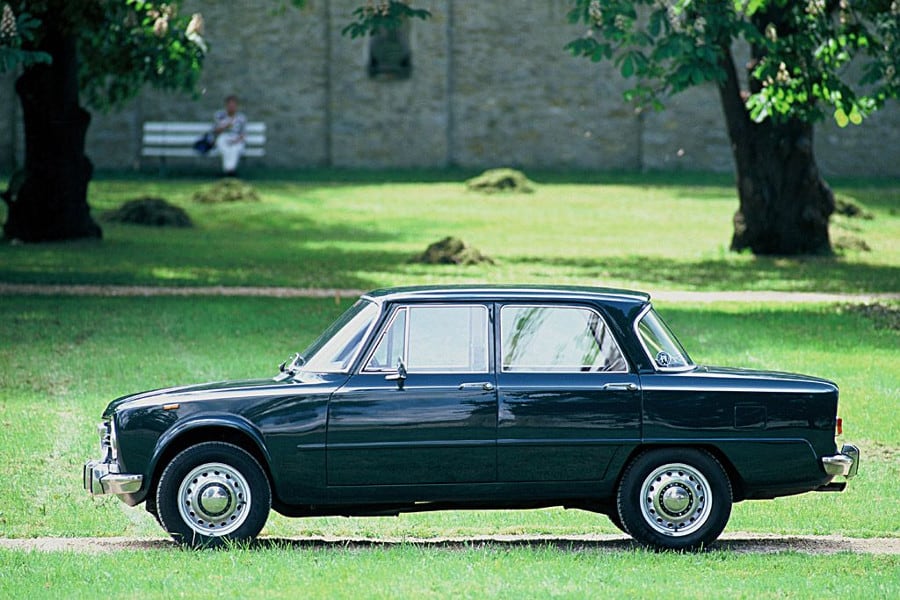
The Spider 1600 ‘Duetto’ with its ‘cuttlefish’ profile appeared in 1966. It was taken to America on the transatlantic liner Raffaello and was made famous by the feature film The Graduate, starring Dustin Hoffman and Anne Bancroft.
The 1750 came along the following year to replace the Giulia saloon. It was a fast, safe car with excellent roadholding. The Giulia Coupé version exhibited at the Montreal International Motor Show in 1967 was a prestigious sports car that was later fitted with a 2500 engine.
In 1968, the company took over a majority shareholding in the Brazilian Fabrica Nacional de Motores (FNM), where it produced trucks and cars such as the 2300 and 2300B (1974-80). In 1963 it also set up a company called Autodelta, under the guidance of Carlo Chiti, to look after all racing activities. The new firm was responsible for producing racing versions of the 33 (2.0 and 3.0 litre) and the 8 and 12 cylinder 3.0 litre boxer engines. Autodelta also produced marine engines and was successful in world powerboat championships. The hard work paid off and, in 1967, a Giulia GTA snatched the European Championship from under the noses of Porsche, BMW and Ford. Three years later, Alfa collaborated with McLaren to produce a 3.0 V8 engine that was later used by the British team in Formula One.
The company serviced aircraft engines (no fewer than 17 were displayed during the International Show at Paris Le Bourget in 1968) and also built them: the J85-13 A power unit was launched in 1970.
1971-1980
Socio-political problems and energy crises were the dominant themes of the Seventies.
Far-reaching repercussions of the ’68 protests led to difficult political times in Italy (the Aldo Moro assassination in 1978) and also to social difficulties (factories were occupied and some managers were injured and even murdered).
The economy suffered as a result: inflation went into double figures and car sales dwindled. By 1970, out of 6.6 million cars sold throughout the nine member countries of the EEC, only 1.3 million (or 19 per cent) were Italian.
By 31 August 1971 the Alfa Romeo Group with its 32,500 employees was forced to face up to a difficult economic situation and the problem of insufficient funds. Despite this, it presented new models such as the 2000 saloon (1971), the Alfetta GTV coupé (1974), the Alfetta 2000 TD – the first Italian car with a turbodiesel engine (1976), a new Giulietta (1977) and the top-of-the-range Alfa 6 with its brand new 2500 cc V6 engine (1979). The Alfasud met with a considerable success: 28,000 cars were produced in 1972. It was the company’s first front-wheel drive car, and 70,000 were built in 1973.
Alfa continued to do well on the race track. The 33 TT 12 won the World Makes Championship (1975) while the 33 SC 12 won the World Sportscar Championship (1977). In 1978, the Alfa Team tied for third place with Brabham in the Formula One Constructors’ league table.
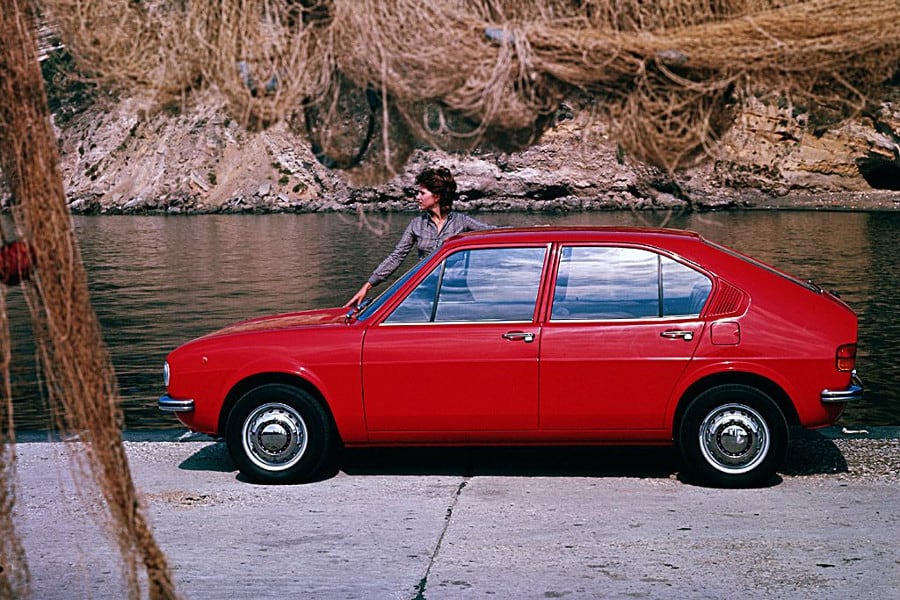
In 1978, Alfa Romeo also signed an agreement with General Electric to build the CF6-32 aircraft engine. The following year it produced the first turbo aero engine to be built in Italy: the 600 bhp AR 318.
Luraghi, chairman since 1957, resigned in January 1974. He was replaced for a few months by Ermanno Guani and later by Gaetano Cortesi who stayed until June 1978. Alfa’s top management team was then headed by Ettore Massacesi as Chairman, and Corrado Innocenti as Managing Director. The task of restructuring the business and introducing new manufacturing processes fell to this pair.
1981-1990
By 1 January 1981, Alfa Romeo SpA was the parent company of the group and thus responsible for control, finance and strategic planning in four sectors.
In 1985, the Italo-Japanese company Cosmo Ventures Incorporated was set up to sell the Spider 3000 and Alfa 75 in Japan. The following year, an agreement with Chrysler allowed Alfa Romeo to sell the Alfa 164 in North America, where the Spider 2000 and GTV6 2.5 were already present.
Yet the financial and market situation became increasingly difficult. IRI decided to sell off the automotive business and so, Alfa Romeo was taken over by the Fiat Group in November 1986. Following that agreement, it was also decided to close down Arna, (Alfa Romeo Nissan Automobili, an Italo-Japanese company set up to produce Alfasud Boxer-engined cars).
The three most representative cars of the decade were the 33 (also launched in Station Wagon and 4×4 versions in 1983), the 90 (1984), the 75 (created to mark the company’s 75th birthday) and the 164 in 1987, the first Alfa Romeo produced as part of the Fiat Group. In the sporting field, the GTV6 became European Touring Champion in 1985, while in 1988 the 75 Turbo Evoluzione was successful in the Italian Speed Touring Championship.
Alfa light commercial vehicles also did well. The Italian Customs and Excise became one of the biggest customers for the F12 van. The AR 8 and AR 6 models were offered in no fewer than 24 versions: multipurpose vehicles, school buses, window vans and the Ravello camper van, to name but a few. Alfa Avio was also sold off when IRI’s industrial activities were further rationalised. It was initially taken over by Aeritalia, but then in 1996 was aquired by FiatAvio.
1991-2000
The first Alfa Romeo 155 left the Pomigliano plant in 1992, and one year later the V6 TI version won the prestigious DTM, the German Touring Car Championship.
Alfa Romeo had now become a group with subsidiary companies of its own, and had outgrown the Portello headquarters, which was being swallowed up by all the new building work going on in Milan.
The 145 and 146 three and five-door hatchbacks were introduced, while new Spider and GTV models produced at Arese continued a proud niche model tradition. They feature Alfa’s new 16v production engine. The Proteo concept car was introduced in 1991 while the stylish, sporty Nuvola prototype (1996) hinted at the memory of Nuvolari’s sporting triumphs. The SZ and RZ limited production sports cars, based on the 75 3 litre, are launched. Alfa’s famous V6 engine gains a 24 valve head.
Great success came with the arrival of the 156 sports saloon, which won the Car of the Year title in 1998. Then came the 166 luxury sedan. The first common-rail diesel engine, the five cylinder 2.4 JTD, was launched by Alfa Romeo in the 156. During 2000, Alfa’s 90th birthday was marked by the arrival of the 156 Sportwagon, a fine blend of Alfa Romeo experience, engineering and style. Alfa’s new compact hatchback, the 147, was launched in the autumn of 2000. Its heritage was clearly visible in its dramatic design which took styling cues from some of the most stunning of Alfa Romeo’s cars of the past nine decades.
2001-2010
The 147 was awarded the prestigious Car of the Year 2001, adjudicated by top European journalists. Alfa launch the 939 range, 8C, MiTo and Giulietta.
The new 159, Brera and Spider ranges were launched with new engines and 4-wheel drive for the higher powered versions. The 159, introduced at the 2005 Geneva Motor Show, was a replacement of the hugely successful 156. The Brera, a 2+2 concept car was shown at the 2002 Geneva Motor Show, designed by Giorgetto Giugiaro of Italdesign Giugiaro. The original concept was powered by a Maserati V8 engine, but in production it featured both petrol and diesel engines including the 3.2 V6. The Brera and Spider were targeted as the replacement of the 916 range GTV and Spider.
The 8C Competizione was designed as a limited edition flagship sports coupe with only 500 made. A further 329 8C Spiders were produced, bringing the total to just 829 cars. The story of the 8C Competizione starts from its name. “8C” refers to the eight cylinder cars designed by Vittorio Jano, cars which in the 1930s won races all over the world including four wins in a row at Le Mans and three at the Mille Miglia. “Competizione”, on the other hand, was the name of the 6C 2500 that Juan Manuel Fangio drove in the 1950 Mille Miglia.
The MiTo B-segment car is launched in 2008 to much acclaim at Castello Sforsesco in Milan. A 3-door super-mini Alfa Romeo, the MiTo takes many design cues from the 8C Competizione, and was popular across Europe and Asia, with over 260,000 cars sold. Production ran until 2018, heralding a decade of production and finding thousands of younger Alfa Romeo enthusiasts in the process, as well as many international awards.

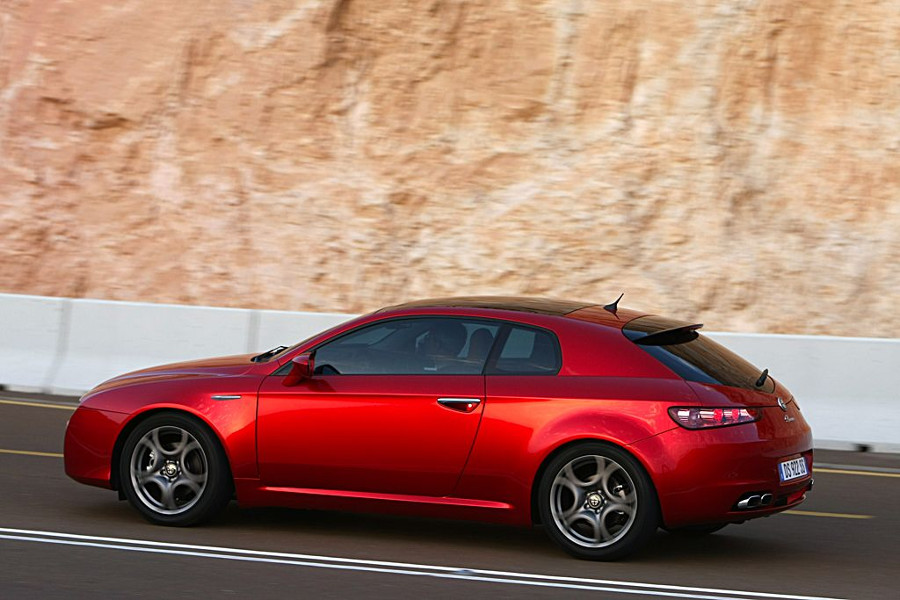
With production of the new C-segment sporty family car starting in 2009, the Giulietta was shown at the 2010 Geneva Motor Show and between 2010 and 2020 production reached over 460,000 cars.
Like the MiTo before it, the Giulietta adopted the new MultiAir engines, being voted Best New Engine in 2010 for the Giulietta. The Giulietta platform was based on the Fiat Group’s compact C-Evo (shared with the Fiat Bravo and Lancia Delta), however, Alfa Romeo spent over 100 million euros re-engineering the platform to result in a longer wheelbase with shorter over-hangs and an advanced new type of MacPherson strut front suspension coupled with multi-link rear suspension..
2011-2020
Marchionne’s influence. A determination to bring Alfa Romeo back to its sporting heritage.
The ambitions of Sergio Marchionne drive Alfa Romeo and other parts of the Fiat Chrysler group forward with ambitious plans.
Unveiled at the 2013 Geneva Motor Show, the Alfa Romeo 4C evidenced what Alfa Romeo was capable of: a unique sports cars with a carbon-fibre monocoque chassis, a 1,750cc Tbi engine and a total curb weight of just 1,118kg. Produced from May 2013 at Maserati’s plant in Modena, the 4C was the first mass-produced Alfa Romeo to be sold in the US market since 1995, and marked a key step in Marchionne’s plans for Alfa Romeo. Introduced in the USA at the 2014 New York International Auto Show, the first 100 4Cs were shipped to the US in early July, with a total 850 being shipped before the end of 2014.
Marchionne had other plans too. He wanted Alfa Romeo to be in the US market, but also in one of the biggest markets on the globe – China. And he wanted Alfa Romeo to be benchmarked against the best Germany had to offer, have the best power-to-weight ratios in every class in which Alfa competes, have ground-breaking and distinctive Italian design, with an important final expectation: “Alfa Romeos have to be produced in Italy with an Italian powertrain,” Marchionne said. “Some things belong to a place. Alfa Romeo belongs to Italy. As Ferrari and Maserati do.”
Since the Alfa Romeo 75, mass-market Alfa Romeos had focused on front-wheel-drive in alignment with the Fiat Group platform sharing requirements. But that was to all end in 2015.
The new Type 952 Giulia was the first mass-market Alfa Romeo for decades to use a longitudinal rear-wheel drive platform, named the Giorgio Platform. And the Giulia would compete with competitors like the BMW 3-Series, so it needed to be exceptional, resulting in rumours surrounding its delay being caused directly by Sergio Marchionne sending designs back to the drawing board if he was not satisfied.
The new Giulia was unveiled to the press at Museo Storico Alfa Romeo at Arese on 24th June 2015 – the 105th anniversary of Alfa Romeo, alongside the re-styled Alfa Romeo logo for all future models. Giulia was presented under the new La meccanica delle emozioni slogan (“the mechanics of emotions”).
Giulia Quadrifoglio was powered by an all-aluminium alloy, twin-turbo, 2.9 litre, 503 hp V6 developed by Ferrari technicians and derived from the Ferrari F154.
With a perfect 50:50 weight distribution, the Quadrifoglio accelerates from 0 to 62mph in 3.9 seconds, reaching a top speed of 191mph. Alfa Romeo broke the Nürburgring record for a saloon car at 7 minutes 39 seconds, a record broken in 2016 by the automatic transmission Quadrifoglio at 7 minutes 32 seconds.
Giulia launched across Europe and the USA to huge acclaim for its design, handling and performance, featuring the Quadrifoglio V6 alongside 2.0 Turbocharged petrol engines and 2.2 Multijet engines, almost all mated to a ZF automatic transmission.

Both the Giulia and Stelvio have enabled special editions including the Quadrifoglio NRING editions with carbon-ceramic brakes, Sparco seats, cargon-fibre interior and exterior trim along with unique NRING badges.
The Quadrifoglio Rading Edition was unveiled at the 2019 Geneva International Motor Show to celebrate Alfa Romeo’s legendary racing history, sporting an exclusive paintwork as a tribute to the new Alfa Romeo C38 Formula 1 car. The Racing edition featured an Akrapovic titanium exhaust and a retuned engine producing 513 hp.

The launch of Giulia also triggered a refresh of the existing models, MiTo and Giulietta, to receive a refreshed front-end and new badging.
But Marchionne was not done with the new Giorgio platform, revealing Alfa Romeo’s first SUV, the Stelvio, at the 2016 LA Auto Show. Sharing the same underlying platform as the Giulia, Stelvio (named after the Stelvio pass) was a ground-breaking shift for Alfa Romeo – an SUV but with the design, handling characteristics and performance of a high-performance saloon car.
Sharing the same engines and ZF gearbox as the Giulia, Stelvio became the world’s fastest production SUV with a Nürburgring lap time of 7 minutes, 51.7 seconds in September 2017.
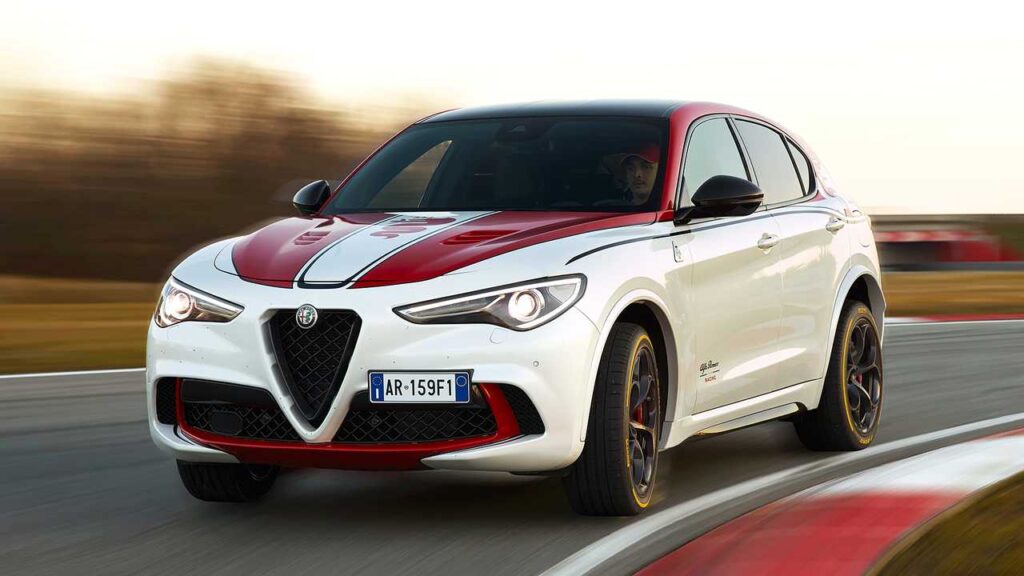
Alfa Romeo in Formula 1 again
In 2018, Alfa Romeo and Sauber announced their partnership for Alfa Romeo be back in Formula 1, and the Sauber team would rename The Alfa Romeo Sauber F1 Team.
As the 2018 season is about to kick off, Frédéric Vasseur, Team Principal, says: “I am very much looking forward to the 2018 season, and to seeing Marcus (Ericsson) and Charles (Leclerc) on track. We have put lots of effort and hard work into the C37 over the last few months, and it is fantastic to be launching the new car today. I am convinced that Marcus and Charles form the perfect driver line-up, with one being an experienced driver and one a promising rookie. Marcus is going into his fourth season with us. He is a valuable part of the team, and we benefit from his experience and precise technical feedback. As for Charles, he has proven his talent in prior categories and deserves to be on the Formula 1 grid this season.”
“Our target ahead of 2018 is clear: We have to catch up with the field and continue improving our performance during the course of the season. We have put lots of energy and commitment into the development of the C37. I want to thank our partners and fans for their continuous support. The return of Alfa Romeo to Formula 1 sets another milestone in the team’s history, and I am proud that such a historical brand has chosen us for their return to the sport. We are eager to start the 2018 season as the Alfa Romeo Sauber F1 Team,” Vasseur continues.
Alfa Romeo’s comeback restores one of the great names that have gone down in the history of motorsport’s premium championship, Formula 1, and marks the return of the “Quadrifoglio”, the legendary badge that has appeared on Alfa Romeo’s top performance cars since 1923, to the circuits. Featured on the engine cover of the new C37, the famous good-luck charm has a fascinating history, deeply rooted in the racing world. The first Alfa Romeo car to carry the Quadrifoglio was the “RL” driven by Ugo Sivocci which won the 15th edition of the Targa Florio in 1923. The same good-luck emblem also appeared on Brilli Peri’s “P2” when he triumphed in the first “Motor Racing World Championship” in Monza in 1925, gaining the first of Alfa Romeo’s five World Titles, and it was present again in 1950 and 1951, when Giuseppe “Nino” Farina and Juan Manuel Fangio drove the Alfa Romeo 158 and 159 cars, the famous “Alfettas”, to success in the first two Formula 1 World Championships.
Today, the legendary symbol returns to the highest level of motor racing to show the whole world the continuing strength and success of the Alfa Romeo philosophy, a constant search for excellence applied to racing, then transferred in its entirety to the brand’s production cars.
The legend continues.
2021 – 2030
GTAm, Electrification and the future – La Metamorfosi
Alfa Romeo boasts a unique history and, on 24 June 2020, it celebrated 110 years, during which its engineers and designers have relentlessly pursued innovation. Over the years, this combination has created some of the most iconic vehicles ever built, and to mark its 110th birthday, Alfa Romeo paid tribute to one of its most emblematic vehicles: Giulia GTA.
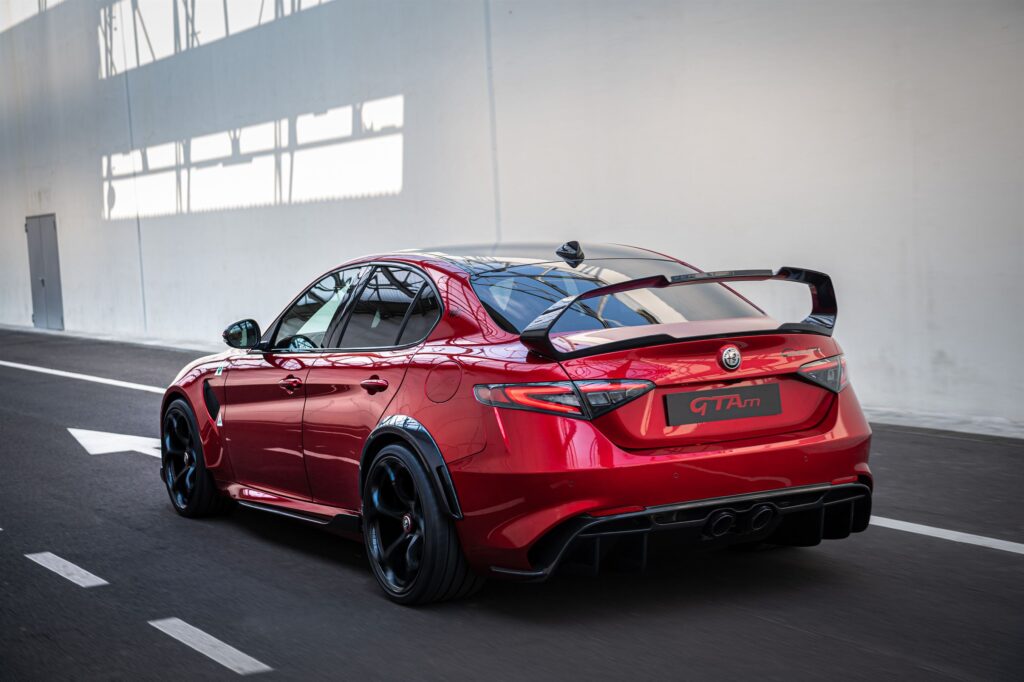
Available in two versions to start delivery at the end of 2021 and into 2022, the Giulia GTA with four seats and the Giulia GTAm with two race seats, roll-bar and six-point harness, they both featured the 2.9-litre V6 Bi-Turbo petrol engine producing 540hp along with a raft of weight saving solutions to remain true to the ethos of the original 1965 model.
The Alfa Romeo Giulia GTA and its extreme version, the Giulia GTAm, were built in a limited edition of only 500 units in total, all numbered and certified and ready to take up their place alongside their 1965 forerunner as one of the most sought-after collector’s items. They are not only magnificent to look at, they are also ready to unleash their impressive power on the road, usable thanks to a series of sophisticated technical solutions.
All were sold out by September 2021.
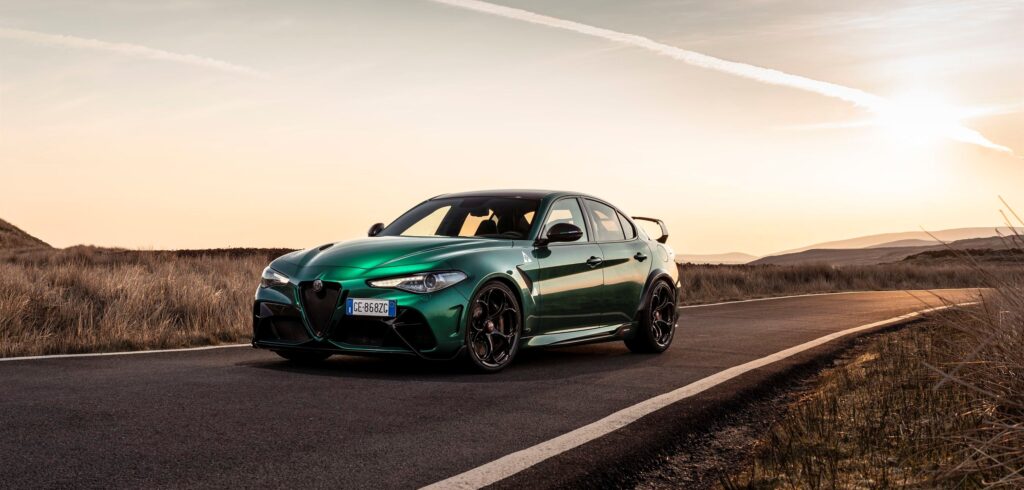
As part of the global automaker Stellantis, Alfa Romeo aims to be the first brand within the group to be all electric for all new models by 2027.
This ambitious strategy begins with the new Tonale – Alfa Romeo’s first hybrid and plug-in hybrid car, the model that marks the brand’s metamorphosis while remaining true to its DNA of Italian sportiness since 1910. With the all-new Tonale, a radical evolution is taking place at Alfa Romeo which is looking ahead to a new era of connectivity and electrification.
The new Alfa Romeo Tonale is an evolution of the concept car first unveiled at the 2019 Geneva motor show. The Centro Stile Alfa Romeo have ensured a continuity of the concept car’s specification to deliver a production car that combines classic Alfa Romeo stylistic features, reinterpreted in the name of modernity, with the characteristics of Italian design.
The Alfa Romeo Tonale is fitted with a range of efficient hybrid engines that highlight the brand’s concrete commitment to a future oriented toward sustainable mobility. With the Tonale the brand has not simply adapted to the new standards, it has reinterpreted its DNA in the direction of energy, harmony with the environment, efficiency and intuitiveness when managing driving modes. This new technology means the Tonale can ensure an authentic hybrid experience. Two levels of electrification are available – hybrid and plug-in hybrid, marking the first step in the process to electrifying the Alfa Romeo line-up.

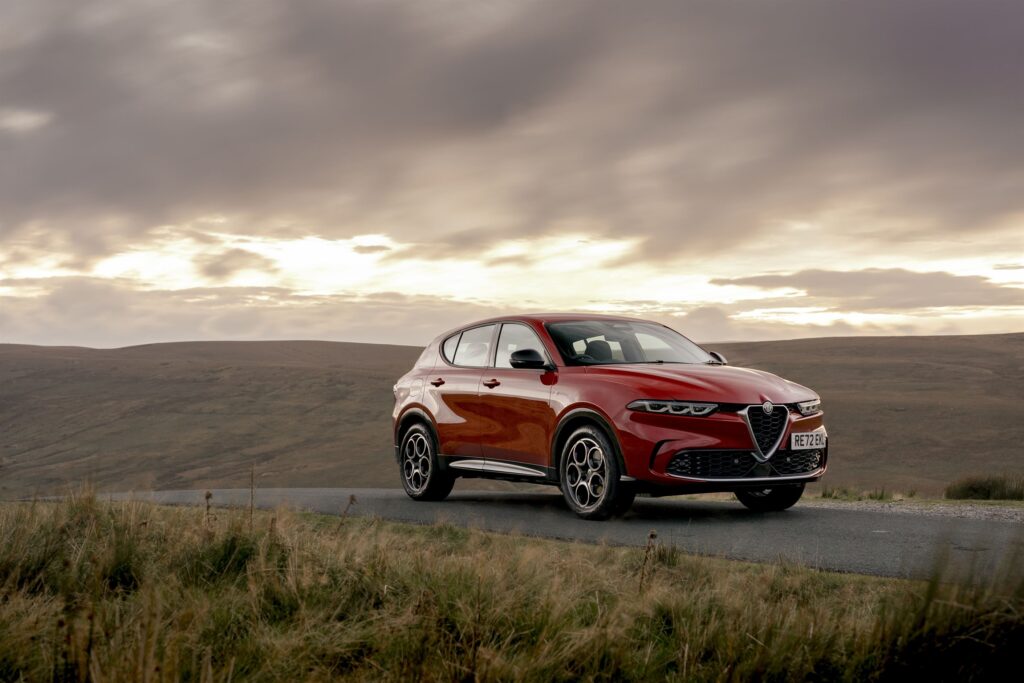
Top performance is guaranteed by the exclusive 275hp plug-in hybrid Q4, the most powerful version in the line-up in terms of performance and level of electrification. The advanced hybrid system combines the 1.3-litre MultiAir turbo petrol engine, from the Global Small Engine family, to provide traction to the front wheels while the electric motor is connected to the rear wheels. The system has a 15.5kWh battery and delivers a total output of 275hp. This makes it the sportiest offering in its class, with zero to 62mph in just 6.2 seconds. The plug-in hybrid version is equipped with Q4 all-wheel drive for an unparalleled level of safety and driving pleasure. The Tonale Q4 is also the most efficient plug-in hybrid C-SUV, with an electric range of up to 80km* on the city cycle and over 60km* on the combined cycle. In the name of maximum efficiency, a full battery charge takes 2.5 hours when using the 7.4kW fast charger.
In a world exclusive, Tonale debuts non-fungible token (NFT) technology, a true innovation in the automotive sector. Alfa Romeo is the first automaker to link a car with an NFT digital certificate. The technology is based on the ‘blockchain card’ concept, a confidential and non-modifiable record of the main stages in the life of an individual vehicle. This distinctive off-board feature emphasises the innovative nature of Alfa Romeo. Upon customer’s consent, the NFT will record vehicle data, generating a certificate that can be used as a guarantee of the car’s overall status, with a positive impact on its residual value. On the pre-owned car market, NFT certification represents an additional source of credibility for owners or dealers to count on. In the meantime, buyers will be reassured in their choice of a second-hand car.




